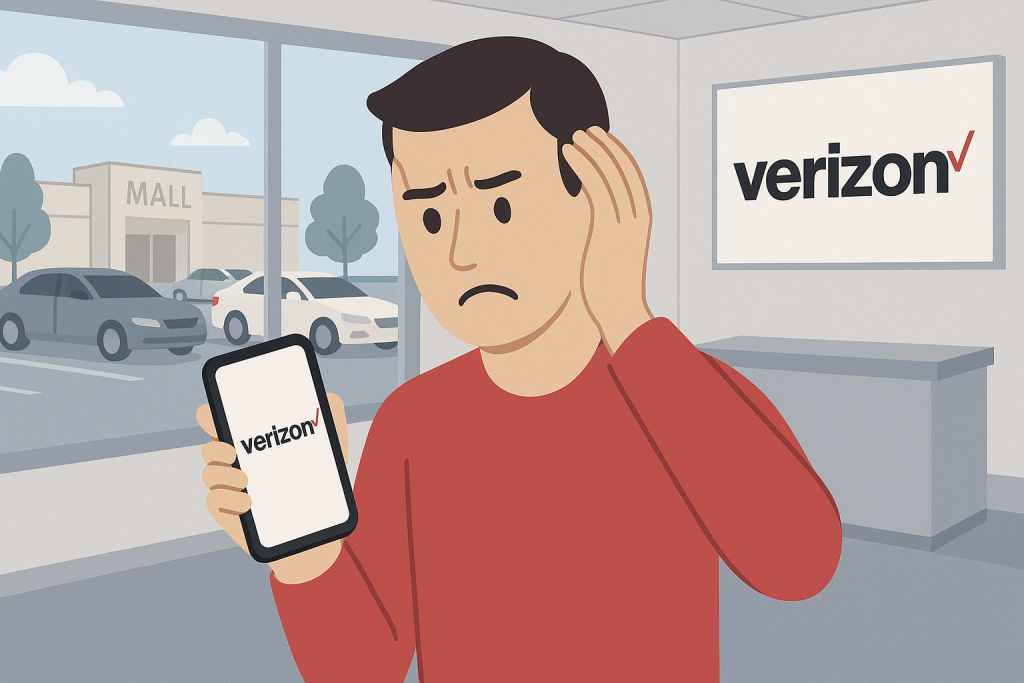Verizon Customers Are Growing Increasingly Frustrated Over Hidden Fees That Make Bills Much Higher Than Advertised
When a cell phone plan promises to be $65 a month, most people expect a bill somewhere in that ballpark. For Verizon customers, however, the reality often looks very different. Across social media, users are venting about the shock of receiving monthly statements that soar far beyond the advertised price, leaving them feeling deceived and frustrated.
The viral post that sparked widespread discussion perfectly captures the sentiment. One user breaks it down bluntly:
- Verizon Plan: $65 Unlimited
- Your Verizon Bill: $185.67
This kind of bill shock is all too common. Customers sign up for plans that seem straightforward and affordable, only to be blindsided by a cascade of additional charges. The pattern is the same: the base plan is heavily advertised, but the final bill includes layers of costs that were either hidden in fine print or poorly explained during sign-up.
Where the Extra Charges Come From
While Verizon technically discloses these fees, the way they add up is what leaves customers feeling misled. Here’s how a $65 plan can balloon into a $185 monthly headache:
- Multiple Lines and Bundling Confusion: A single line might start at $65 with auto pay, but adding family members or multiple lines quickly raises the base rate. A family of four can see a base charge of around $180 before taxes.
- Taxes and Regulatory Fees: These often add 10–20% or more to the bill, a cost rarely emphasized in marketing.
- Surcharges and Administrative Fees: Small line-item fees that feel like nickel-and-diming can add up to several dollars per line each month.
- Add-Ons and “Perks”: Streaming service perks or hotspot add-ons, sometimes $10–15 each, can sneak onto the bill if selected during sign-up or via promotions.
- Device Payments and Insurance: Anyone financing a new phone or carrying insurance will see their bill jump significantly beyond the plan price.
In a widely shared response online, a user explained that these charges are what push a $65 plan into the $180–$190 range. For someone expecting a straightforward bill, the experience feels like a bait-and-switch.
The Customer Backlash
This kind of pricing confusion has sparked waves of anger among customers. Social media is filled with posts from people venting about the gap between Verizon’s marketing and reality. One user summed it up with exasperation, questioning why Verizon seems to “lie to their customers about discounts and promos,” pointing out that a plan they were told would be $98 regularly hits $175 after “unexplainable fees.”
The frustration isn’t just about the money, it’s about trust. Customers sign up for a plan believing they know what they’ll pay. When the bill arrives inflated with opaque charges, it feels like they were tricked. Even if the fine print technically disclosed the costs, the emotional impact is the same: customers feel scammed.
Why This Problem Persists
Telecom companies have long relied on complex billing structures. Fees are often broken into multiple line items to comply with regulations and justify various services. But to the average customer, it just looks like a pile of mystery charges. Verizon’s marketing emphasizes the “starting price,” which works well in ads but leaves a sour taste when real-life bills tell a different story.
This disconnect also fuels customer churn. Many people reluctantly pay for a few months, then begin looking for alternatives. Competitors sometimes lure these frustrated users with their own seemingly cheaper offers, though in many cases, the cycle of hidden fees repeats.
A Growing Call for Transparency
Consumer sentiment is shifting. Customers are no longer quietly accepting confusing bills and “mystery fees.” Online complaints and viral posts are forcing more people to scrutinize their bills and share their experiences. Some are demanding all-in pricing where the advertised plan matches the final bill, taxes and fees included.
Until telecom providers embrace true transparency, the cycle of frustration will continue. Customers will keep signing up for plans that look simple and affordable, only to find that their $65 plan somehow costs nearly triple. For many, the real issue isn’t just the money, it’s the feeling that their trust has been violated, one unexplained surcharge at a time.

Verizon treats it’s customers like they are nobody’s who they can swindle, deceive. This company always has a surprise ready for me each month at bill time. I wish I could give them the phone back and never do business with them again. Someone needs to stop these criminals.
I hate verizon for nickel and diming me without my prior consent
Hi there I’m a return Verizon and I’m a AT& T customer But anyway I have got me a real nice Verizon cell phone that I like pretty well and then I’m Relly a customer with AT&T but I want to switch with using Verizon and then I want to know can I change my cell phone number to 574-702-0990 instead the phone number that you had sent me witch is 574-355-7208 and my pin number is1964 and I’m would like to change my cell phone number if I could thank you so much and then I like Verizon much better AT&T and if i don’t hear from any buddy tomorrow I will call you up because todays Sunday you could call me at 5747378925 or you could call my cell phone 574-702-0990 thank you very much James Allan III